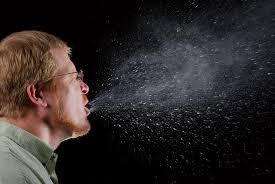Rhinovirus Infections are commonly knows as common cold virus.For many decades, attempts have been made to isolate the common cold virus. On some occasions, propagation of infectious material was accomplished for a brief period, but the viruses could not be sustained, and the.1, were not characterized. Since 1954, the virus known as 2060 and the closely ’elated JH strain were isolated from adults with acute coryza. These viruses were believed to be enteroviruses and were designated echovirus 28 Soon thereafter, several different workers isolated similar viruses that were designated in the earlier literature as Salisbury agents, ERC viruses, entero-like viruses, coronaviruses, reoviruses, aid unclassified common cold viruses. Because of common biologic properties, these are all designated low as rhinoviruses.
They comprise a subclass in tie family of picornaviruses, which also include tie Coxsackie, polio-, entero- and echo viruses. These are all small -viruses (10 to 30 mt) of the ribonucleic acid type that are not inactivated by ether. There appear to be approximately 60 different serotypes of rhinoviruses capable of infectiig man. Their acid lability (pH 3) is probably the reason for their absence from the intestine, and is the major property that distinguishes them rom the enteroviruses. .Rhinoviruses characteristically grow best in tissue cultures held at reduced temperature (33° C.) similar to that found in the nose of man. Some authors have designated M and H strains according to whether the viruses will grow in cultures of monkey tissues (M strains) or only in human cell strains (H strains). This classification has no importance for infections in man.
Prevalence and Epidemiology Rhinovirus Infections.
Rhinoviruses have been isolated from man in the United States, Great Britain, and Sweden. It is likely that they infect persons in all countries and climates. Similar viruses have been recovered from cattle, but transfer from other animals to man has not been shown. In human infections, some serotypes may occur annually, but in studies performed to date, the occurrence of different serotypes has been haphazard. Infection with rhinoviruses is more prevalent among adults than among children. About one third of adults with colds and 10 to 15 per cent of children have had rhinovirus recovered from the nasal secretion. Infection with these viruses is relatively more frequent in summer and in midwinter. Rhinoviruses have been recovered in 1 to 3 per cent of well adults observed in the winter months.
Clinical Manifestations and Diagnosis of Rhinovirus Infection.
Rhinovirus infections nearly always present with rhinitis, sore throat, dry cough, and malaise. Fever is absent or of slight degree and transient. No pharyngeal exudate is observed, but cervical adenopathy can occur. In children, rhinoviruses sometimes cause croup or lower respiratory tract disease, but most of the infections produce a typical common cold. The incubation period is one to three days, and the course of illness is about one week. Rhinovirus appears in the nasal secretion a day or two before the onset of nasal symptoms, and is shed during the period of illness. The pathologic findings and pathogenesis are described under the Common Cold. A rise in neutralizing antibody in the convalescent serum occurs in only about one half of the infections.
Treatment of Rhinoviruses.
There is no specific treatment; the supportive measures are the same as those given under treatment of the common cold. Quarantine is not necessary. No polyvalent vaccine is available, but experimental vaccines have been effective against a single type of rhinovirus. The large number of distinct serotypes is discouraging to the prospects of developing an effective vaccine unless strains that cause heterotypic responses are found. Immunity to reinfection is quite specific and probably lasts only several months to two years after most infections, although detectable serum’ antibody may persist longer. Investigational new drugs have shown a prophylactic effect against rhinovirus infection in volunteers. This is a promising omen for the future, but no chemotherapeutic remedy is presently available.
